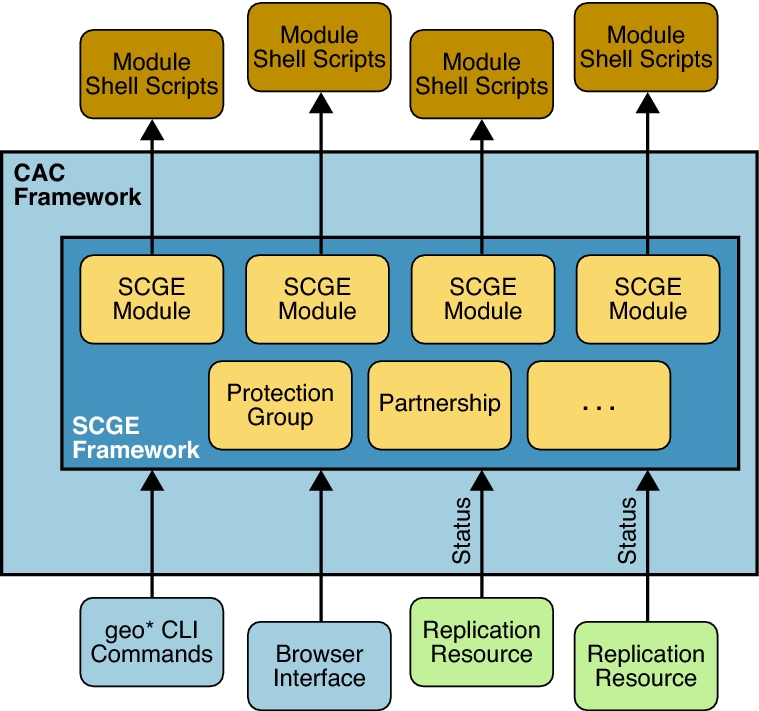Script-Based Plug-In Architecture
Unlike other replication modules, the script-based plug-in is generic and capable of supporting a wide range of replication technologies. Consequently, the script-based plug-in does not contain a specific set of scripts to control a particular piece of replication software. Instead, it provides a framework for integrating a set of scripts or programs that you, the developer, write and that a system administrator will later use.
This flexibility means that the script-based plug-in cannot directly enforce the inclusion or exclusion of application resource groups in a protection group. Furthermore, the script-based plug-in cannot even restrict the node lists of these entities, nor the relationship with the replication resource group that contains the replication resource needed to supply the replication status, or indeed any other resource group that is required.
The following figure outlines the relationships between the various components within the Geographic Edition system. Commands issued through the command-line interface (CLI) call the Geographic Edition modules through their relevant common agent container modules. These modules then call out to shell scripts to perform specific tasks. Once a protection group has been instantiated, the replication resource, representing a particular replicated object entity, reports its status back to the module through the event framework. This process enables the overall replication status to be reflected in the Geographic Edition output on the command line or in the browser interface.
Figure 13-1 Script-Based Plug-Ins Framework

The script-based plug-in developer therefore is free to govern the relationships between any or all of these entities: application resource group, data replication resource group, and replication status resource group. As the following figure shows, the only constraints are the requirements to have a named replication resource group per protection group and a named replication resource per device group or replicated component.
Figure 13-2 Script-Based Plug-In Replication Resource Group

The consequence of these requirements is that the administrator must provide script-based plug-in configuration file for each protection group that is accessible from all cluster nodes and that details which nodes pertain to each script-based plug-in configuration. The purpose of this configuration file is to ensure that any subsequent developer-written scripts are called on one or more nodes on which the service is present.
In addition to the standard protection properties, the script-based plug-in enables the developer to name one or more scripts to perform the actions required by the Geographic Edition framework. These actions fall into two separate groups: those actions that operate at a per protection level and those actions that operate at a per replicated component level.